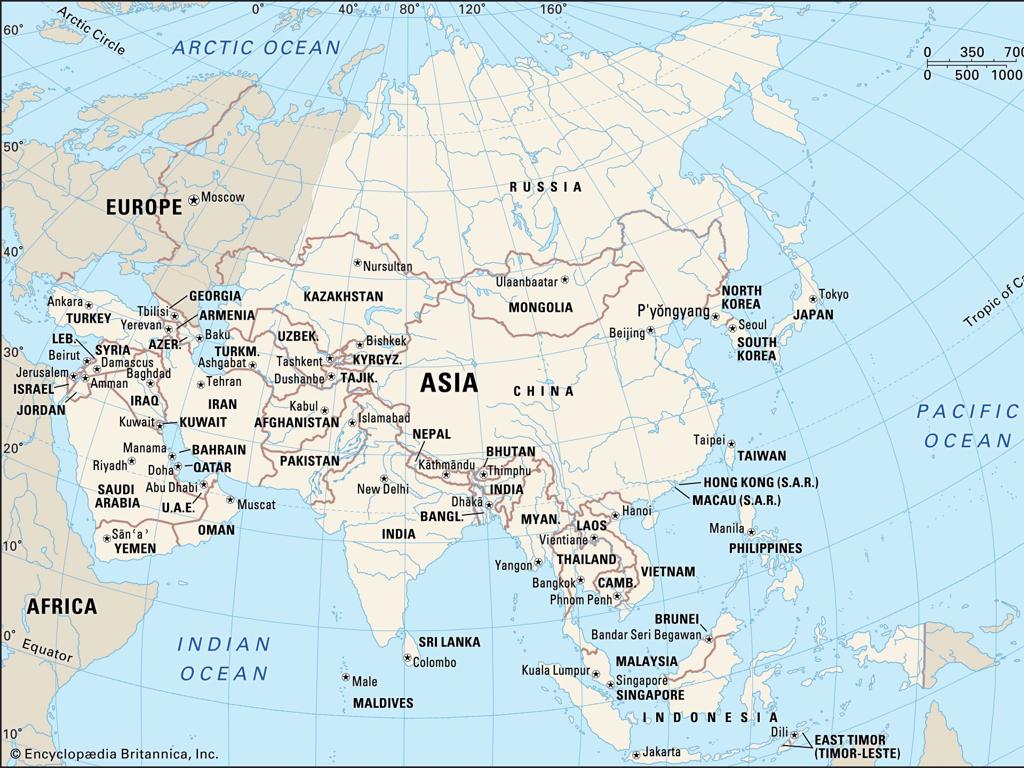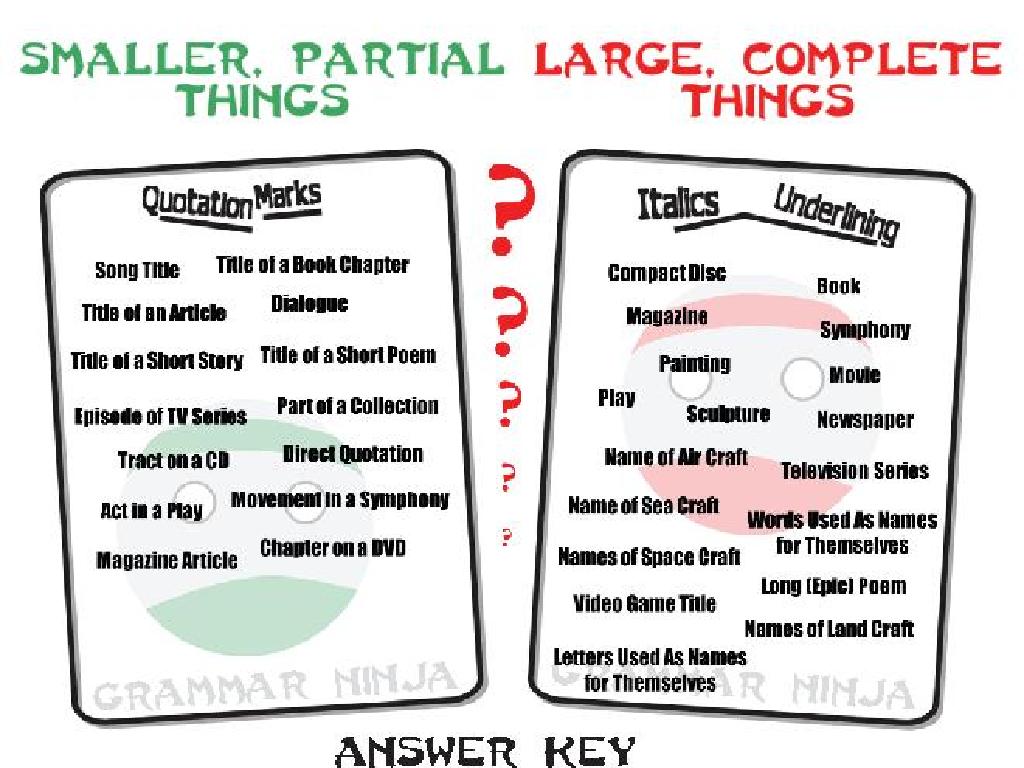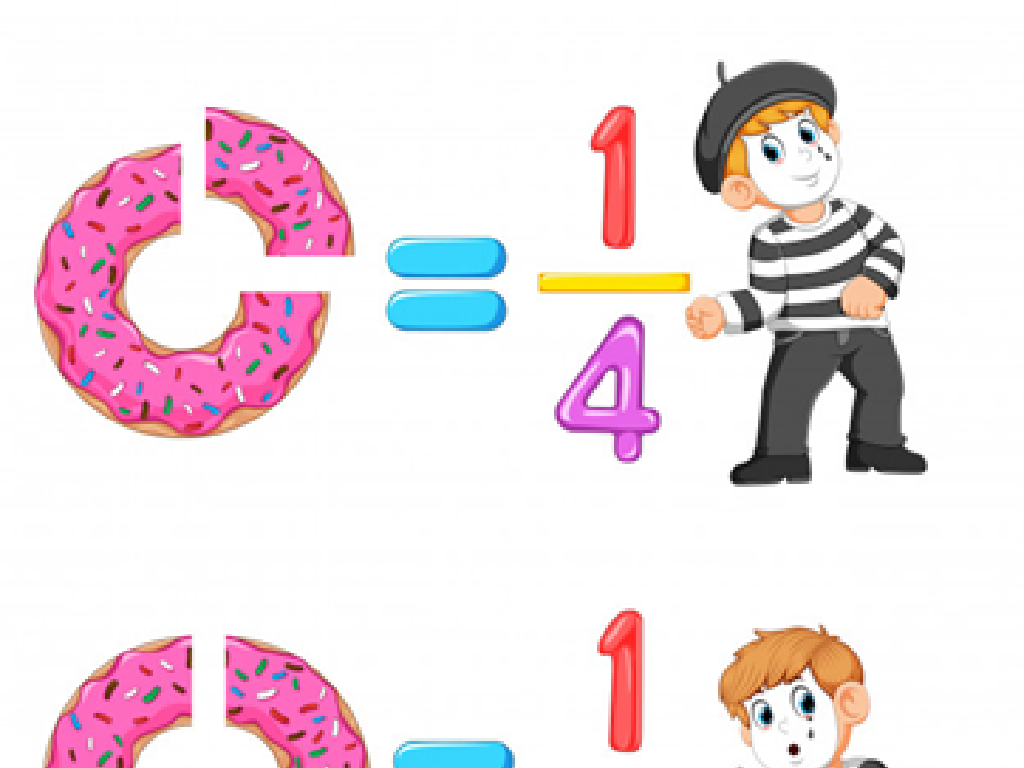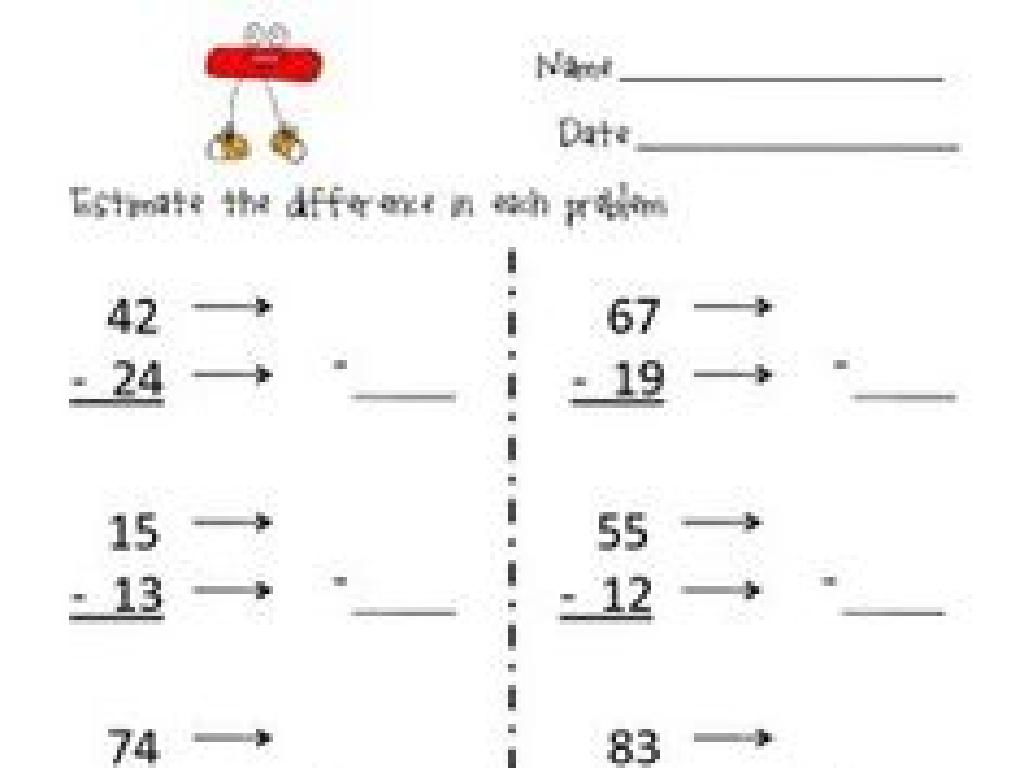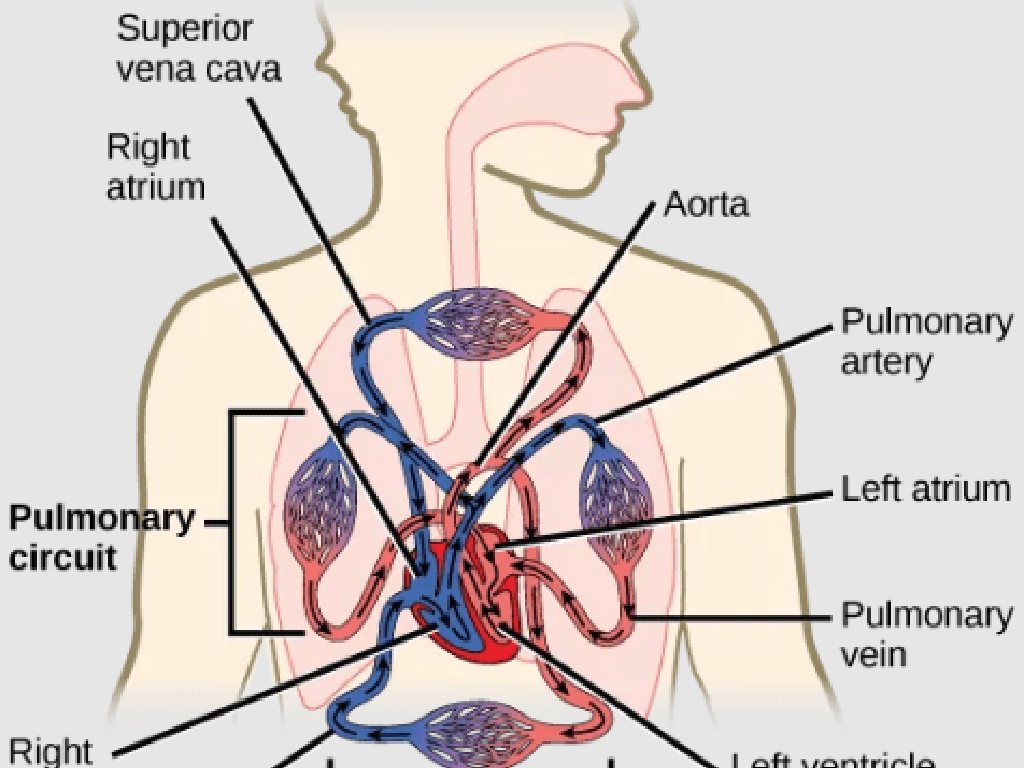Sort Solids, Liquids, And Gases
Subject: Science
Grade: Second grade
Topic: States Of Matter
Please LOG IN to download the presentation. Access is available to registered users only.
View More Content
Welcome to States of Matter!
– Exploring solids, liquids, and gases
– Solids have a fixed shape; liquids flow; gases fill their container
– Matter makes up our world
– Matter changes: solid, liquid, gas
– Ice melting to water, water boiling to steam
– Observing matter changes around us
– Watch water boil, ice melt, or steam from a kettle
|
This slide introduces the concept of states of matter to second-grade students. Begin by explaining that everything around us is made of matter and that matter can be in the form of solids, liquids, or gases. Use tangible examples like ice (solid), water (liquid), and steam (gas) to illustrate how matter can change states. Encourage the students to think of other examples of solids, liquids, and gases they encounter in daily life. Plan simple demonstrations or experiments, such as melting ice or boiling water, to visually show these changes. The goal is to help students observe and understand that the state of matter can change under different conditions, such as temperature changes.
Exploring States of Matter
– Matter is everything around us
– Matter comes in solid, liquid, gas
– Solids: Rocks, ice-cream
– Solids hold their shape, like rocks or frozen ice-cream
– Liquids: Water, milk
– Liquids flow and fill containers, like water or milk
|
This slide introduces the concept of matter and its different states to second-grade students. Begin by explaining that everything they can touch and see is made of matter. Matter can exist in three main forms: solid, liquid, and gas. Provide examples of solids and liquids that are familiar to the students, such as rocks and ice-cream for solids, and water and milk for liquids. Emphasize that solids have a fixed shape while liquids take the shape of their container. Save the explanation of gases for the next slide or activity, where you can demonstrate with examples like air or steam. Encourage students to think of other examples of solids and liquids they encounter in their daily lives.
Exploring Solids in States of Matter
– Solids have their own shape
– Solids do not flow like liquids
– Liquids change shape to fill containers, solids don t
– Solids have a fixed volume
– The amount of space a solid takes up doesn’t change
|
This slide introduces the characteristics of solids to second-grade students. Emphasize that solids are unique because they maintain their shape regardless of their container, unlike liquids or gases. Explain that solids do not flow or pour like liquids; they stay put. Lastly, discuss how solids have a fixed volume, meaning they always take up the same amount of space. Use tangible examples like blocks, books, and chairs to help students understand these concepts. Encourage students to touch and observe solid objects in the classroom to reinforce the lesson.
Characteristics of Liquids
– Liquids match container shapes
– Water in a cup becomes cup-shaped
– Liquids can flow smoothly
– Pouring water moves easily
– Fixed volume, shape shifts
– A bottle of water is always full, but can change shape in a balloon
– Liquids don’t stack like blocks
|
This slide aims to help second-grade students understand the properties of liquids. Start by explaining that liquids, like water or juice, can change shape to fit inside different containers, such as cups, bowls, or bottles. Demonstrate how liquids flow by pouring water from one container to another. Highlight that while liquids can change shape, they always have the same amount, which is their volume. Use hands-on activities like filling various shaped containers with water to illustrate these concepts. Avoid using complex terms and keep explanations simple and relatable. Encourage students to ask questions and share their observations of liquids in their daily lives.
Exploring Gases: A State of Matter
– Gases fill all available space
– Like when a balloon inflates, the gas fills it up completely
– Gases flow with ease
– Think of how the smell of cookies baking spreads through the house
– No fixed volume or shape for gases
– Unlike a solid block or a liquid in a cup, gases change to fill their container
|
This slide aims to help second graders understand the characteristics of gases as part of the states of matter. Emphasize that gases are all around us, even though we can’t always see them. They have unique properties: they will spread out to fill the entire space they’re in, they can flow or move very easily, and they don’t have a fixed shape or volume like solids and liquids do. Use relatable examples such as inflating balloons or the way smells move through a room to illustrate these points. Encourage students to think of other examples of gases and how they behave differently from solids and liquids.
Let’s Sort Them Out!: States of Matter
– Identify items as solid, liquid, or gas
– Look at objects and decide their state of matter
– Recall characteristics of each state
– Solids are hard, liquids flow, gases spread out
– Is it hard like a rock?
– Solids don’t change shape easily
– Can it pour like water or fill a room like air?
– Liquids take the shape of their container, gases expand to fill space
|
This slide is designed to help students apply their knowledge of the three states of matter by classifying various items. Begin by reviewing the characteristics of solids, liquids, and gases. Solids have a fixed shape and volume, liquids have a fixed volume but take the shape of their container, and gases have neither fixed shape nor volume and will spread out to fill the space they are in. Use tangible examples like rocks for solids, water for liquids, and air for gases to illustrate these concepts. Encourage students to think about the items they interact with daily and categorize them accordingly. This activity will reinforce their understanding and help them visualize how different states of matter occupy space.
Changing States of Matter
– Matter changes states
– Freezing turns water to ice
– Water becomes solid ice below 0°C
– Boiling turns water to steam
– Water turns to gas steam above 100°C
– Observing water’s changes
|
This slide introduces the concept that matter can change from one state to another under different conditions. Use water as a relatable example to show how it changes from liquid to solid when it freezes and from liquid to gas when it boils. Explain that the temperature at which water freezes is 0 degrees Celsius and it turns into ice, a solid. When water is boiled at 100 degrees Celsius, it becomes steam, a gas. Encourage students to think about and share other examples of matter changing states that they’ve observed in their daily lives, such as melting butter or evaporating puddles.
Class Activity: Matter Scavenger Hunt
– Explore solids, liquids, and gases
– Pair up and categorize items
– List classroom items under each state
– For example, pencil as solid, water as liquid, air as gas
– Share discoveries with the class
|
This interactive activity is designed to help students apply their knowledge of the states of matter by identifying examples in their immediate environment. Students should work in pairs to encourage collaboration. Provide guidance on what constitutes a solid, liquid, and gas. After the scavenger hunt, facilitate a discussion where each pair shares their findings, reinforcing their understanding of the states of matter. Possible variations of the activity could include finding the coldest or warmest solid in the classroom, identifying liquids of different viscosities, or capturing gas in a balloon.
Sorting States of Matter: Conclusion
– Excellent work on sorting matter!
– Recall characteristics of each state
– Solids hold shape, liquids flow, gases fill space
– Identify states of matter at home
– Find examples in the kitchen like ice, water, steam
– Keep practicing and exploring
|
As we wrap up our lesson on states of matter, congratulate the students on their ability to sort solids, liquids, and gases. Reinforce their understanding by reminding them of the key characteristics: solids have a fixed shape, liquids take the shape of their container, and gases spread out to fill their container. Encourage them to continue their exploration at home by identifying different states of matter in everyday life, such as ice (solid), water (liquid), and steam (gas). This will help solidify their understanding and make the concept more tangible. Keep the encouragement positive and remind them that practice is key to learning.

